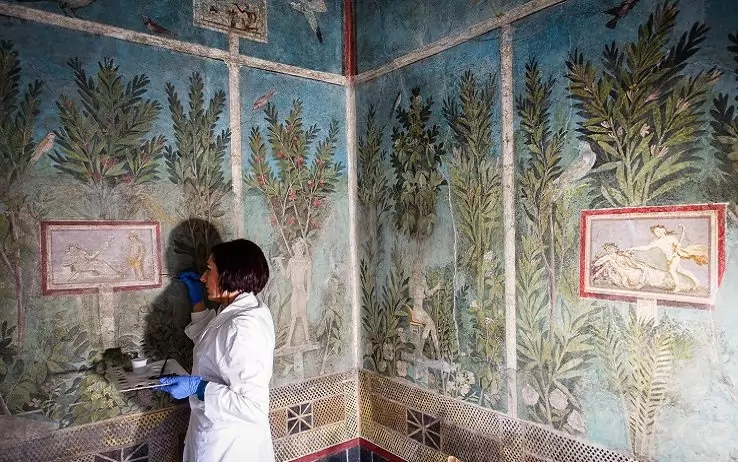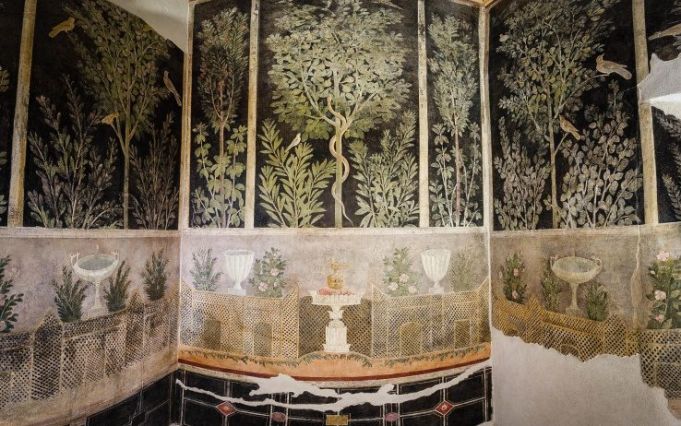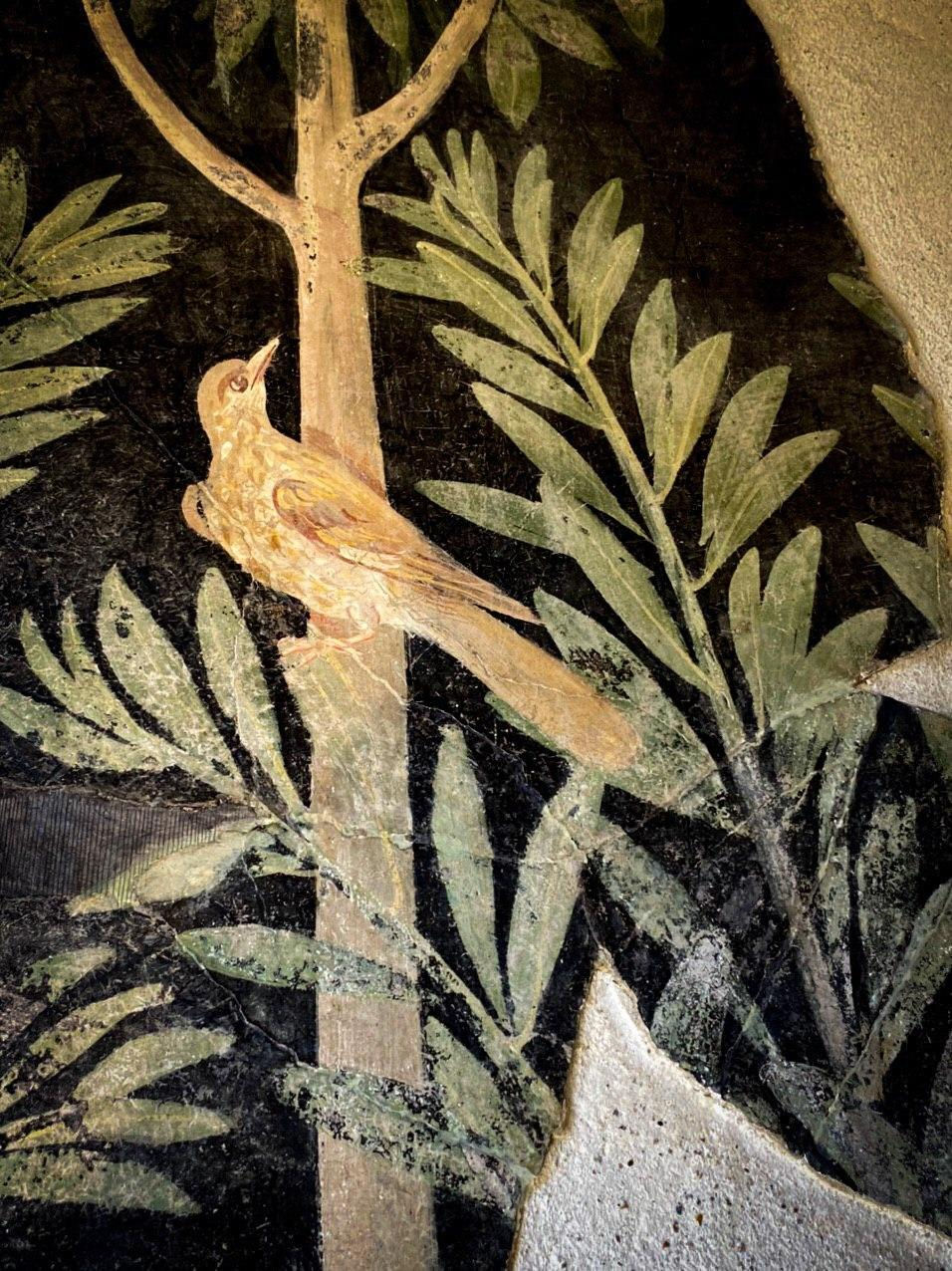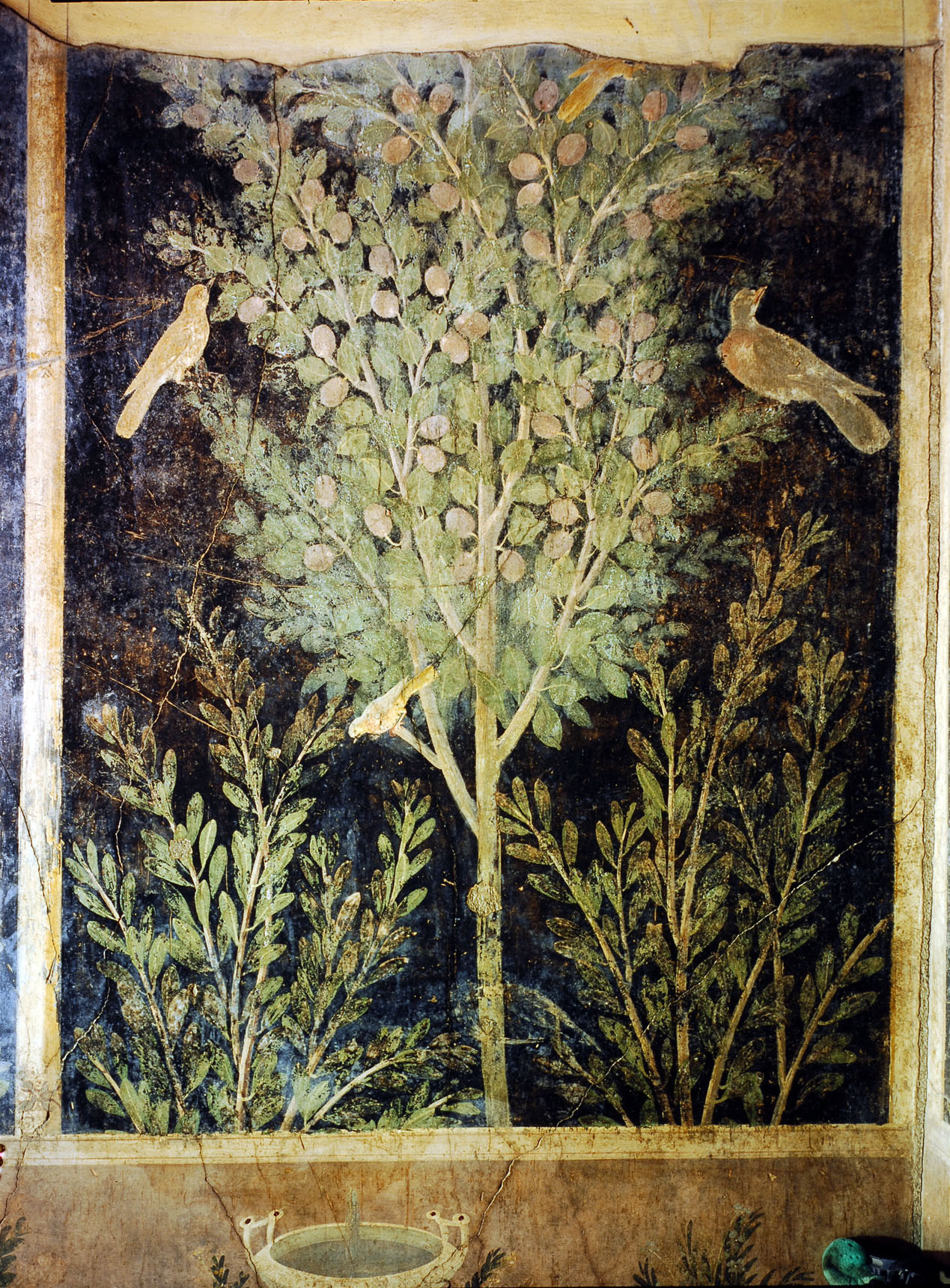The House of the Orchard in Pompeii, though modest compared to some of the grander villas of the ancient city, is a true artistic gem. This small residence stands out for its exquisite frescoes—painted scenes of lush gardens, filled with meticulously depicted trees, ornamental plants, and birds. These murals are a testament to the advanced craftsmanship and artistic sensibility of the time, transforming the walls of the Domus into a serene and immersive space that reflects the homeowners’ appreciation for nature and beauty.
Table of Contents
ToggleA Glimpse Into Ancient Roman Life
First excavated in the early 20th century, the House of the Orchard dates back to the 3rd century BC. Over the centuries, it underwent several reconstructions and renovations. Its final form, however, was interrupted by the eruption of Mount Vesuvius in 79 AD, which buried the house under volcanic ash. The layers of ash acted as a protective shield, preserving its remarkable frescoes for future generations to uncover.

These frescoes not only showcase artistic excellence but also provide an invaluable insight into Roman domestic life and the cultural importance of nature within Pompeian homes. Garden imagery was a common motif in Pompeian art, symbolizing prosperity, beauty, and harmony with nature. The detailed depictions of flora and fauna in the House of the Orchard reflect a desire to bring the outdoors inside, creating a tranquil environment that likely served as an escape from the busy streets of Pompeii.
The Peristyle and the Garden Theme
One of the most significant features of the House of the Orchard is its central peristyle—a garden courtyard surrounded by columns. This open space was an important architectural element in Roman homes, where nature and social life intersected. The frescoes adorning the interior walls of the house extend this natural theme, blurring the boundary between indoors and outdoors. The lush garden scenes were painted with such precision that visitors might feel they are walking through an actual orchard, not just a painted rendition.

The careful attention to detail in these frescoes reflects the high regard for nature in Roman culture. The presence of birds, blooming trees, and ornamental plants suggests that the owners valued tranquility and beauty, which were central to Roman ideals of a comfortable and harmonious life. Such imagery also symbolized fertility, abundance, and the promise of eternal life, all important aspects of Roman spirituality.
Restoration and Preservation
In recent years, the House of the Orchard has undergone extensive restoration efforts, breathing new life into its walls and allowing visitors to experience the same awe as ancient Pompeians. Conservation teams have worked tirelessly to preserve the vibrant colors and intricate details of the frescoes, ensuring that this piece of ancient Roman culture remains accessible for future generations.

The restoration has focused on maintaining the authenticity of the artwork while stabilizing the structure of the house, preventing further deterioration. The reopening of the house to the public has reignited interest in Pompeii’s rich history and the remarkable artistry that flourished in the ancient city.
A Living Legacy
Now reopened to the public, the House of the Orchard continues to captivate visitors with its timeless beauty. Standing in this once-bustling home, one is transported back to a time when nature was intricately woven into the fabric of daily life. The restored frescoes not only highlight the artistic achievements of Pompeii but also serve as a reminder of the resilience of human creativity, even in the face of natural disasters.

We extend our gratitude to Ian and Diana, friends of our page, for sharing a photo from their recent visit. What a treat it is to witness such a remarkable piece of history come to life once again!
Conclusion
The House of the Orchard in Pompeii offers a unique window into the past. Despite its smaller size, its breathtaking frescoes and architectural design place it among the most important homes in Pompeii. With its recent restoration, the house continues to enchant visitors, allowing them to step back in time and appreciate the artistic mastery of ancient Rome. As an enduring symbol of Roman life, art, and culture, the House of the Orchard remains a timeless treasure, captivating the imaginations of those who seek to explore the beauty of the ancient world.

